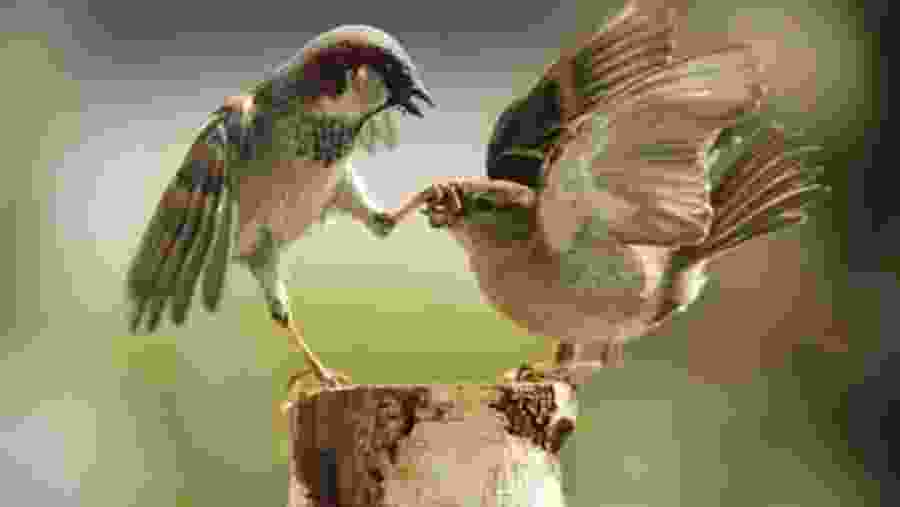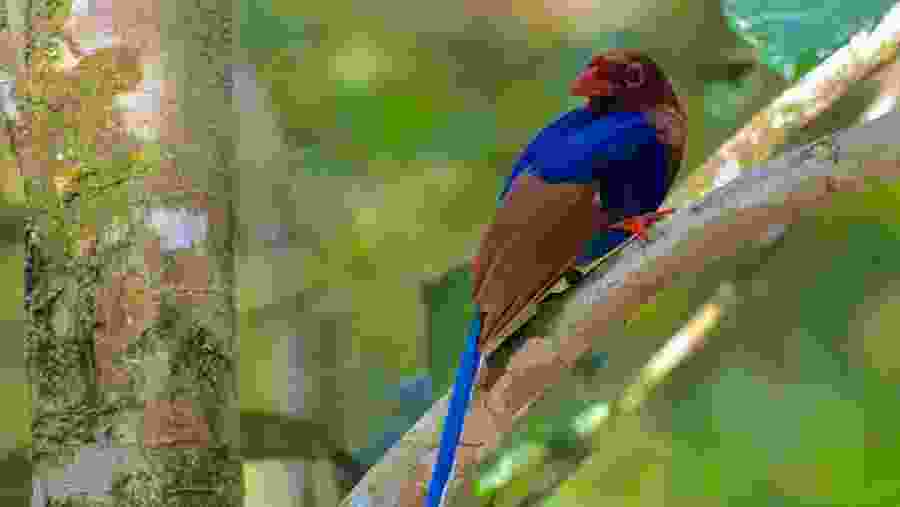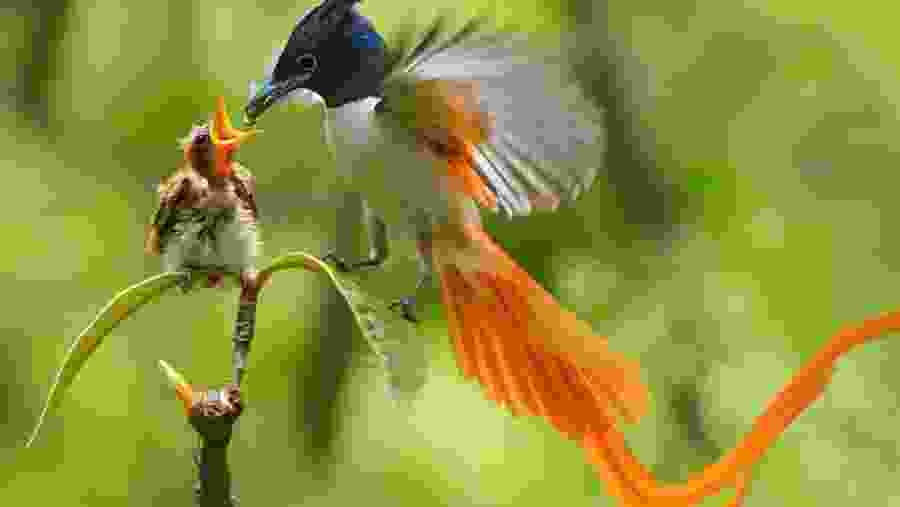Bird watching Safari
Highlights
Negombo, Gampaha, Wilpattu National Park, Minneriya National Park, Yala National Park, Colombo, Galle, Bundala National Park, Udawalawe National Park, Sigiriya, Kandy, Nuwara Eliya
Locations Covered
Negombo, Gampaha, Wilpattu National Park, Minneriya National Park, Yala National Park, Colombo, Galle, Bundala National Park, Udawalawe National Park, Sigiriya, Kandy, Nuwara Eliya
bird, nature, sightseeing
Group Tour
18 Days
Easy
English
Description
Embark on an exciting birdwatching safari to several Sri Lankan National parks, including Kitulgala Forest, Yala, Wilpattu, Udawalawe, Minneriya and Horton Plains National Parks. Go on multiple safaris and spot a variety of endemic and migratory bird species. Also, explore some attractions like Tooth Relic Temple, Galle Dutch Fort, Spices Garden and Gangaramaya temple.
Itinerary
-
Day 1: Arrival in Negombo
- On arrival at the Bandaranaike International Airport, you will get your first taste of warm Sri Lankan hospitality from your tour representative.
- Then, transfer to Negombo accommodation for an overnight stay.
-
Day 2: Gampaha Botanical Garden
- After breakfast, we will visit Gampaha Botanical Garden. Gampaha Botanical Gardens spreads over 43 acres of beautiful landscape with the lake developed beside the garden. It is generally a well-tended garden displaying a wide range of plants. This garden possesses an array of botanical and horticultural attractions with a rich history and a wonderful plant collection of the wet zone.
- Next, visit the first Rubber plant of Sri Lanka.
- Explore Fisherman village, enjoy beach life & relax. See Negombo Lagoon, lined with fishermen’s huts, feeds into the Dutch-era Hamilton Canal. The canal leads south to Colombo. Negombo is one of the major commercial hubs in the country and the administrative centre of Negombo. It is known for its long sandy beaches and centuries-old fishing industry.
Relax in the hotel and overnight.
-
Day 3: Wilpattu Sanctuary
- Leave early from the hotel and transfer to Wilpattu.
- Enroute, visit Anawilunda wet water zone, which includes endemics such as Fowls, Pigeons, Parrots, Parakeets, Malkoha, Coucal, Owl, Owlet, Hornbill, Barbet, Magpie, Bulbul, Warbler, Babbler, Thrush, White-eye, Mynah, Starling, Flycatcher, Flowerpecker, Pigeon, Barbet, Flareback, Wood shrike, Drongo and Swallow.
- In the evening, head to Wilpattu Sanctuary, which was declared as a National Park in 1938.
Overnight stay at hotel.
-
Day 4: Minneriya National Park
- Early morning, leave to visit Minneriya National Park.
- Enjoy afternoon game drives and an elephant ride.
Overnight stay at hotel.
-
Day 5: Sigiriya
- After breakfast, leave for Sigiriya Lion Rock & Pidurangala Rock climbing.
- Engage in challenging climb Rock Sigiriya and see the incredible view of the majestic Sigiriya Rock from Pidurangala.
- Get the most valuable experience of the Srilankan Village lifestyle.
- Engage in fun activities such as Bull cart driving, river safari and paddy field activities.
Overnight stay at hotel.
-
Day 6: Sigiriya - Kandy
- Transfer to Cave temple and golden temple of Dambulla heritage city.
- Then, head to Kandy.
- Spend the evening within the mesmerizing interiors of Temple of the Tooth Relic, followed by a concert showcasing traditional Sri Lankan music and dance.
- Visit Peradeniya Royal Botanical Garden, the garden which includes more than 4000 species of plants, including orchids, spices, medicinal plants and palm trees.
- Next, move to Scenic Kandy Lake (Bogambara Lake),
- Afterwards, enjoy watching the Kandyan dance show.
Overnight stay at hotel.
-
Day 7: Knuckles Range Kandy
- At 7:00 am, our trekking guide will provide a brief description of the village and trekking.
- Midway, take a tea break at Game Gadara.
- Start the trek by 8:00 am. You are encouraged to work and become part of the village life.
- Witness Heeloya waterfall and a nice river bath.
- Then, enjoy a traditional Sri Lankan lunch at a village house.
- Head back to Kandy Hotel for an overnight stay.
-
Day 8: Nuwara Eliya
- Today, drive about 80km (approx. 3hrs) along winding roads lined by green slopes of tea plantations and reach Nuwara Eliya, the heart of the tea growing industry and full of colonial charm.
- En route visit Ramboda water falls.
- Then, enjoy the experience of tea flauckersteyle.
- Go for a city tour of Nuwara Eliya and visit victoria Hakgala National Park.
- Next, head to Seetha Amman Temple.
Relax overnight stay at hotel.
-
Day 9: Horton Plains Nuwara Eliya
- Today, travel to Horton Plains and Brake's Falls.
- En Route, visit Ambewela New Zealand farm vegetables farm and strawberry farm.
- Then, proceed to Hakkgala Botanical Garden to see spice plants.
- Explore Lake Gregory and enjoy cool weather.
Overnight stay at hotel.
-
Day 10: Kithulgala Forest Reserve
- Arrive at Kitulgala Adventures Camp by 11 am, where a welcome drink will be served.
- Eat lunch at the camp and go for natural rock pool sliding and confidence jumps.
- Head back to the camp and enjoy a cup of tea with snacks.
Dinner and overnight stay at Kitulgala Adventures camp.
-
Day 11: Udawalawa National Park
- Transfer from Kitulgala to Udawalawa National park.
- In the afternoon, go for a game drive in Udawalawe National Park.
Overnight stay at Udawalawe Safari hotel.
-
Day 12: Yala National Park
- Early morning, transfer via Tissamaharama to Yala National Park for a full day game drive.
- Enjoy a traditional Sri Lankan lunch.
Overnight stay at Eco Hotel.
-
Day 13: Bundala National Park
- Early morning, leave for Bundala National Park.
- Watch some of the migrants, including the Openbill, Ibis, Heron, Egrets, Pelicans, Cormorant, Water-cock, Swamphen, Watermen, Stilts, Duck and Grebe.
- Then, visit the Katharagama Hindu temple.
Overnight stay at Hotel.
-
Day 14: Kumana National Park
- Early morning, leave for Kumana National Park.
- Watch some of the migrants, including the Openbill, Ibis, Heron, Egrets, Pelicans, Cormorant, Water-cock, Swamphen, Watermen, Stilts, Duck and Grebe.
- Eat a traditional Sri Lankan lunch at the park.
Overnight stay at hotel.
-
Day 15: Galle
- After breakfast, visit Dutch Fort Galle.
- Go for a River safari at Madugamga.
- Explore Castle farm and Mask factory in the morning.
- Spend a free afternoon and relax on the beach.
Overnight stay at the hotel.
-
Day 16: Galle
- Today, head to Galle Spices Garden.
- Visit Moonstone Mine Meetiyagoda Moon center point in Sri Lanka.
- Then, proceed to Castle farm Ahungalla and mask factory in Ambalangoda.
Overnight stay at hotel.
-
Day 17: Colombo
- Leave for Colombo city tour in the morning.
- Visit Gangaramaya temple (water lake Temple).
Overnight stay at hotel.
-
Day 18: Departure
- Transfer to the airport to board your return flight.
Tour ends.
What's Included
What's Excluded
Know Before You Go
Meeting Point
Cancellation Policy
-
For cancellations upto 2 days before the tour -
Refund of 80% of the tour price.
Price
| Adult | |
|---|---|
| 1 to 4 | /person |
| Child | |
| 1 to 4 | /person |
|
This is a group tour |
|





